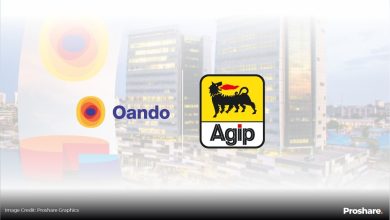NESTLE NIGERIA : UNDER THE BURDEN OF DEBT

Nestle Nigeria , a food and beverage giant, no doubt ,is known to be very proactive and competitive in the industry . In the last few years , it has taken some decisive steps and made some strategic choices that have delivered superior returns and values; its Investments hit NGN57.3 B during the last five years and in 2020 alone it invested N15.4Billion . Also , its Total staff strength was 2,239 at the end of 2020. These developments have ,indeed, delivered some sterling values to this multinational: Its market capitalization grew by 57 percent from N760.7 billion to N1.193 trillion from 2015 to 2020 , turnover grew over the last five years by 90% , profit after tax development over the last five years by 65%
However , its highly leveraged posture or high concentration of debt over equity is also rapidly slowing down its fortunes in the last few years ; between 2019 and 2020 , its financial performances have come under serious threat . Turnover grew meagerly by 1 percent from 2019 to 2020 , operating profit backtracked by 11percent as profit after tax caved in by 14 percent from 2019 to 2020 Although its cash flow is still modestly enough to withstand its debt position, its liquidity position is tight and profitability waning due to mounting financial costs.
Nestles FUNDAMENTALS ,THE FIGURES
More of these misfortunes could be traced to its high leveraged posture although the general economic downturn is also responsible. .But these fleet-footed finance costs are now the major drawbacks on its fundamentals . In its 2020 financial year , revenue increased slightly by 1 percent to N287billions from N284 billion while its cost of sale inched up by 8 percent to N168b from N156b during the same period .This brought down its gross profit down to N119 b from N128b ,a 7percent decline .Also, its operating expenses fell slightly 3 percent to N54.7b against N56.1b in 2019 .In spite of this , its operating income fell by 11 percent toN64,418b in 2020 from N72,062b in 2019 . What actually wrecked havoc on the spanner of its bottom line is crashing finance income by 51 percent .to N647b from N1,329b .The skyrocketing finance cost sealed it up with N4,427b or 95 percent increase expended from N2,267b in 2019 leading to a whooping negative net finance income of N3,780b , a 303 percent crash from another negative net finance income N938b in 2019 . Profit before tax expectedly backtracked by 14.7 percent to N60,638b from N71,124b while profit after tax crashed to N39,212 from N45,683 ,a 14 percent decline .
.The same thing happened in the second quarter of 2021. Revenue grew merely by 0.66% to N213bn in the second quarter ,2021 from N211bn in the previous quarter.; Profit before tax declined by 12.9% to N49.3bn.,Profit after tax declined by 13.3% to N31.9bn.while Net Assets declined by -8.2% from N45.6bn to N41.8bn.
NESTLE’s HIGH LEVERAGED POSITION
.For Nestle Nigeria in the recent years , it has been largely debts .This is vividly reflected in its staggering finance costs. Its long term debts skyrocketed from N5.5billions in 2019 financial year to N33.8 billionin2020 as its short term loans hit N6 .4 billion from N5billion from 2019 ,Expectedly , it finance costs followed the same trend at N4.4 billions from N2.3 billions while its net finance income inched up negatively to N3.8 billion from negative N928 millions in 2019. This may not be far-fetched. Finance income came down to N646.5 m in 2020 from N1.3 b in 2019 .In the recently released third quarters 2021 results , its long term borrowing ballooned to N62 billions from N33.8 billions in December ,2020 as short term Loans and borrowings hit N9 billion from N6.4 billions in December , 2020..Likewise its finance income rose from N701m to N 1.2 b while its finance costs hit N5.7 billions from N1.6 billions ; its Net finance income, however , increased to negative N4.5 billions from negative income of N924 billions within the same period in 2020 This skyrocketing negative net finance income due to small volume of finance income compared to whooping finance costs is the genesis of its misfortunes in 2020 financial year . These along with the ever rising input and operating costs are a source of worry .
Is using more debt than equity financing really a crime ? Since equity financing is a greater risk to the investor than debt financing is to the lender, the cost of equity is often higher than the cost of debt ; cost of capital, is crucial in determining a company’s optimal capital structure or whether more debt than equity is deployed or not and vice versa Debt is not bad but everything has a price . What is the nature of a company that should use either of the two and in what proportion ? This is one of the few questions, among many others , that some captains of industries battle to resolve in their decision making once in a while .Conscious efforts are usually made to answer these questions ; however , answers to these questions are not cast in stone . Both debt and equity have their attractions and repulsions. .No doubt , debt financing has many attractions that make some industry leaders to largely prefer it to equity as in Nestle Nigeria . First , business loan generally can keep cash flowing ; moreover , it is less expensive to issue debt as opposed to equity as debts act as a tax shield since interest expense is deducted from earnings before income taxes are levied, . In a nutshell. ,the benefit of debt financing is that it allows a business to leverage a small amount of money into a much larger sum, enabling more rapid growth than might otherwise be possible but such a company is expected to have overwhelming cash flow
Nestle’s CASH FLOW AND HIGH LEVERAGE POSTURE
How this posture contributed to its uninspiring run may not be farfetched . The mode of business financing that the management of any economic agent goes for or chooses to manage its business varies and requires a lot of wisdom ; sometimes , this process could be a very critical and hectic ; sometimes it requires a brainstorming moment to arrive at this decision .While some prefer largely debt to equity financing, it is other way round for others . Debt financing is a good weapon in the hands of aggressive managers for aggressive growth .But these attractions are with some binding and clear clauses .Only companies in very stable industries with consistent cash flows like Nestle could heavily use debt relative to equity ; companies in risky industries or companies who are very small and just beginning operations with fragile cash flow may burn their fingers . .
Nestle Nigeria cash flow is ,indeed, robust .Perhaps ,due to the above attractions Nestle Nigeria Plc uses great volume of debts relative to equity . But is Nestle Nigeria not getting an overdose of debt ? Some analysts observe that there are signs that the company has stumbled into a widening debt hole . As at December ,2020 , its debt volume N40,212 billions . In Q3 ,2021 .its corporate debt size year on year (Y-o-Y). represents an over 700% rise .In absolute figure Nestle borrowing hit N71 ,270 billion in the third quarter of 2021 from N51,905 billions in the second quarter
Whatever may be the rationale behind the skyrocketed figures ,what could not be disputed is that any advantage expected from this more debt to equity posture comes but at a price .There is always a danger attached to those benefits of debt financing .For instance , if a company fails to generate enough cash, the fixed-cost nature of debt can prove too burdensome. This basic idea represents the risk associated with debt financing. Therefore finding the mix of debt and equity financing that yields the best funding at the lowest cost is a basic tenet of any prudent business strategy. For this reason ,the best business loans are those that offer low rates, but if business credit scores aren’t high, the corporate agent involved may not qualify for those lower interest costs.
NESTLE’S LEVERAGE RATIO
The company’s debt to equity mix is raising concern. The impact of the skyrocketing borrowing or debt becomes more vivid when viewed from its leverage ratios over years . The first confirmation of Nestle’s high degree of debt financing over equity is its assets to its equity or equity multiplier . This is a financial leverage ratio that measures the portion of company’s assets that are financed by stockholder’s equity. Between 2014 and 2018 this ratio were 2.9 5, 3.14 , 5.49, 3.27,and 3.23 while its three and five year averages were 4.00 and 3.62 respectively within that period . These figures are the percentages or portions of equity in the whole assets of Nestle while over 90 percent or portion of the assets were financed by debts .Between 2019 and 2020 it was 4.2 and 8.4 respectively confirming that above 90 percent of its assets were financed by debts .
Moreover, its debt to equity sheds further light on the degree of its leverage . Debt here incorporates both short-term and long-term debts .Between 2014 and 2018 , the ratios were 90, 79.,164 , 54 and 17 percent respectively . Three and five years averagely , it was 78 and 81 percent respectively . In 2020 , it was 137 percent against 29 percent in 2019 .From the above analysis its debt to equity reached roof top in 2014, 2016 and 2020. This could raise an eyebrow from any analyst or investor .
CASH FLOW TO EQUITY
From its book analyses , there is a reason to believe that Nestle is banking on its cash flow believed to be robust No doubt , the cash flow and the credit rating of Nestle Nigeria are strong enough to tap on for the benefit of using more debts as opposed to equity to its desired degree
This is confirmed by Nestle cash flow from operating activities to interest expense ratio. What constitutes a good interest coverage varies not only between industries but also between companies in the same industry..Generally, an interest coverage ratio of at least two (2) is considered the minimum acceptable amount for a company that has solid, consistent revenues. Analysts prefer to see a coverage ratio of three (3) or better. In contrast, a coverage ratio below one (1) indicates a company cannot meet its current interest payment obligations and, therefore, is not in good financial health.
For Nestle these ratios were 4.43 in 2014 financial year and . 8.19 in 2015 . From 2016 to 2020 it ranged 2.95, 1.27 , 28.62 ,56.1 and 28.1 . This ratio is a measure of a company’s cash from business activities relative to the company’s interest expense. The higher interest expense are relative to CFO the lower the level of the company’s solvency. From the above analysis Nestle cash flow is good for its debt to equity position over years as the company can conveniently pay its interest with the cash flow from its operations . . This ratio was 11.7 in September, 2021 .
Nestle cash flow position in relations to its debt between 2020 to September 2021 also does not show the company is under threat . Its cash flow-to-debt ratio ranged between 0.73,1.33,1.21.,0.80,8.95 ,3.78 and 4.50 in 2020. However , it was 0.9 or 90 percent in September,2021 a signal that it has overwhelming cash to pay its debt .This ratio is coverage ratio and can be used to determine how long it would take a company to repay its debt if it devoted all of its cash flow to debt repayment A high cash flow to debt ratio indicates that the business is in a strong financial position and is able to accelerate its debt repayments if necessary. Conversely, a low ratio means the business may be at a greater risk of not making its interest payments, and is on a comparably weaker financial footing.
Finally , Nestle cash flow position to its operating income also confirms its financial position is good though it is high leveraged . Its cash flow-to-operating earnings ratio were 0.80,
1.18,1.61,0.35 and 1.23 from 2014 to 2018 respectively .Between 2019 and September 2021 .1.23 ,0.77 and 1.20 This ratio shows Nestle could cover all of its operating expenses if it devoted all of its cash flow to covering operating cost
NESTLE’s LIQUIDITY
However , its interest costs have ballooned out of the necessary proportion compared to is cash flow recently and its liquidity is therefore under threat ; there is no doubt that the baby food manufacturer is in a debt trap that suggests a corporate liquidity crunch. The company’s operating cash flow ratios in the last few years confirm this assertion. Between 2014 and 2018 this ratio ranged from 0.53,0.67,0.51 , 0.24,and 0.81 .This ratio is a measure of how well current liabilities are covered by the cash flows generated from a company’s operations. The ratio can help gauge a company’s liquidity in the short term . An operating cash flow ratio of less than one indicates the a company has generated less cash in a period than what is needed to pay off its current liabilities ; the firm has not generated enough cash to cover its current liabilities. To investors and analysts, a low ratio could mean that the firm needs more capital
This is also confirmed by its current and quick ratios over the last few years The current ratio tells investors how a company can maximize its current assets to satisfy its current debt and other payable .Between 2014 and 2018 ,its current ratios ranged from 0.84, 0.82, 0.81,0.91 and 0.90 respectively Its quick ratio also tells the same story . ranging from 0.59,0.63 ,0.64,0.61 and 0.65 between the same period .This is an indicator of a company’s short-term liquidity position and measures a company’s ability to meet its short-term obligations with its most liquid assets
In the third quarter 2021 , the company’s current ratio (a measure of operating liquidity or cash availability) is roughly 1 compared to the preferred analytical ratio of 2. The preferred ratio would mean that for every one Naira of short-term liabilities, the manufacturer had N2 in near-term cash assets available to pay off short-term loans and advances. While the ratio of 1 is considered manageable by some corporate analysts, others believe that it cuts the debt service capacity of the beverage maker to the bone.
Investors of the company may require that Nestle’s management take a more critical look at the manufacturer’s liquidity tightness. The options open to the company would appear to be to raise equity to improve the company’s debt-to-equity ratio or to propose conversion of part of the current debt outstanding into fresh equity by way of a convertible debt issue. Analysts have said that the company should do this at a prospective interest rate lower than the company’s current average cost of debt. The move could reduce its weighted average cost of capital and improve share valuation. Analysts further note that the devaluation of the domestic currency in the year and rising headline inflation rate have equally conspired to affect Nestlé’s H1 2021 earning numbers adversely.
NESTLE’s PROFITABILITY
How have the above forces impacted Nestlé’s profitability ? Between 2018 and 2019 ,its revenue increased from NGN244.15B to NGN266.27B while gross profit inched up from NGN100.87B to NGN113.92B as profit after tax moved up from NGN33.72B to NGN43.00B But they ,indeed , affected its profitability in the full financial year 2020 and Q2,2021 ; it however, recovered in Q3 . Its Q3 2021 Unaudited results for the period ended September 30th, 2021 showed moderate improvements . Revenue grew by 23% to N262bn from N213bn in the previous quarter., Cost of sales inched up by 31 percent to N160,300b in the third quarter 2021 from N122,708b in the similar period of 2020 . Profit before tax grew by 5% to N52bn., Profit after tax grew by 5% to N33.6bn. and Net Assets grew by 19% from N29bn to N35bn.
Between 2014 and 2020 , the impacts of the above revenues and costs translate to less impressive operating margins . its operating margins were 20.37% ,22.31%, 21.01%,,22.81% , 22.77 ,25.37 and 22.43 . During the same period , its earning per shares were 28.05 ,29.95,10.00,42.55 , 54.2,57.63 and 49.47 . Both are still unimpressive as merely over 20 percent of its revenue is converted to profit at operational level . Also , in spite of its high price per share its share earning power is uninspiring between 2014 and 2016 at less than N30,00 . While the operating margin measures how much profit a company makes on a naira of sales , Earnings per share is an indicator of a company’s profitability This unimpressive performance came out boldly between the third quarter of 2020 and 2021. Its operating margins were 21.95 in the third quarter of 2021 and 22.11 in the corresponding period of 2020 while earning per share were 14.95 and 12.76 respectively between the two periods
The rising input costs are revealed in the amount of money left over from sales after deducting the cost of goods sold .as less 50 per cent are converted to profit as its gross profit margin . Between 2014 and 2018 its gross profit margins ranged from 42.72%,44.52% ,41.41%, 41.31% and 42.78% . This nosedived to below 20 percent between 2019 and 2020 due to the skyrocketing input costs . In 2019 , it was 16 percent and in 2020 ,it fell to 13.7 percent . On quarterly basis , in 2021, it was 12.7 percent in the second quarter and 15,5 percent in the second quarter of 2020 compared to 13 percent and 14 percent in the third quarters of 2021 and 2020 respectively .
Profit its made on a naira of sales, after paying for variable costs of production, such as wages and raw materials, but before paying interest or tax or after input and operating costs were paid ranged from 20.37%, 22.31%,21.01%,22.81% to 22.77% Between 2019 and 2020 it was 25.4 and 22.4 percent respectively .In 2021, jt was 22 percent in the third quarter compared 22 percent in the corresponding period of 2020 compared to 21 percent in the second quarter of 2021 and 24 percent in the same period of 2020 ;
Finally it Net profit margin or how much of each naira in revenue collected by Nestle translated into profit ranged from 15.51% ,15.69%, 4.36%,,13.81% and 16.15%, 16 percent and 13.6 percent between 2014 and 2020 .In 2021,in the second quarter it was 12.7 percent compared 15.5 percent in the same period of 2020 ; and in the third quarter of 2021 , net profit margin was 12.8 percent compared to 15 percent in the third quarters of 2020
Its Return on average assets (ROAA) ,an indicator used to assess the profitability of a firm’s assets that is often used as a means to gauge financial performance were between 20.75%, ,21.07%, 5.49% ,21.32% , 27.82% from 2014 to 2018 . However , between 2019 and 2020 it fell from 25.7 percent to 17.8 percent , 23.6 percent and 15.9 percent
, Its Return on average equity (ROAE) , a financial ratio that measures the performance of a company based on its average shareholders’ equity outstanding , were 58.11%, 64.20%, 23.01%, 89.03% and 90.45% ; in 2020 it rose to 104.8 percent from 95.4 percent .In Q3, 2021, its ROA fell to 11percent from 13 percent in Q3 ,2020 while ROE stood at 96,7 percent and 100.01 percent between the two periods . .However , the high figures only reflected its high level of company debt b against its equity
Also its price earning power or Earnings per share reflected high valued share price Between 2014 and 2020 it ranged from N28.05 ,N29.95 ,N10.00 ,N42.55 and 54.26 57.63 and 49.47In the third quarter level , 2021 ,its EPS was N42.37 compared to N40.29 in the corresponding period of 2020 .
Share price movement-Looking Down with Hope
The current share price of Nestle Nigeria (NESTLE) is NGN 1,400.00. NESTLE closed its last trading day (Friday, November 5, 2021) at 1,400.00 NGN per share on the Nigerian Stock Exchange (NGX). Nestle began the year with a share price of 1,505.00 NGN but has since lost 6.98% off that price valuation, ranking it 124th on the NGX in terms of year-to-date performance. Shareholders’ worries are compounded by the fact that NESTLE has lost 5% of the stock’s value from October 7th to date.
The share price of Nestle Nigeria was N1,505 in January 2021 before it slipped to N1,450 in February and then sunk marginally by -6.9% to N1,350 in March. Between March and June, the share price stayed below N1,420. However, it grew by +10% in July to N1,540. The year-to-date (YTD) share price movement has increased by +2.33% to N1,540 as of August 2 2021. The volatility in share price during the period was associated with corporate disclosures by the company and investor sentiment towards the stock
Nestle Nigeria is the 84th most traded stock on the Nigerian Stock Exchange over the past three months (Aug 9 – Nov 5, 2021). NESTLE has traded a total volume of 9.09 million shares—in 2,165 deals—valued at NGN 12.8 billion over the period, with an average of 144,356 traded shares per session. A volume high of 1.55 million was achieved on August 17th, and a low of 191 on September 21st, for the same period. The table below details the last 10 trading days of activity of Nestle Nigeria on the Nigerian Stock Exchange.






